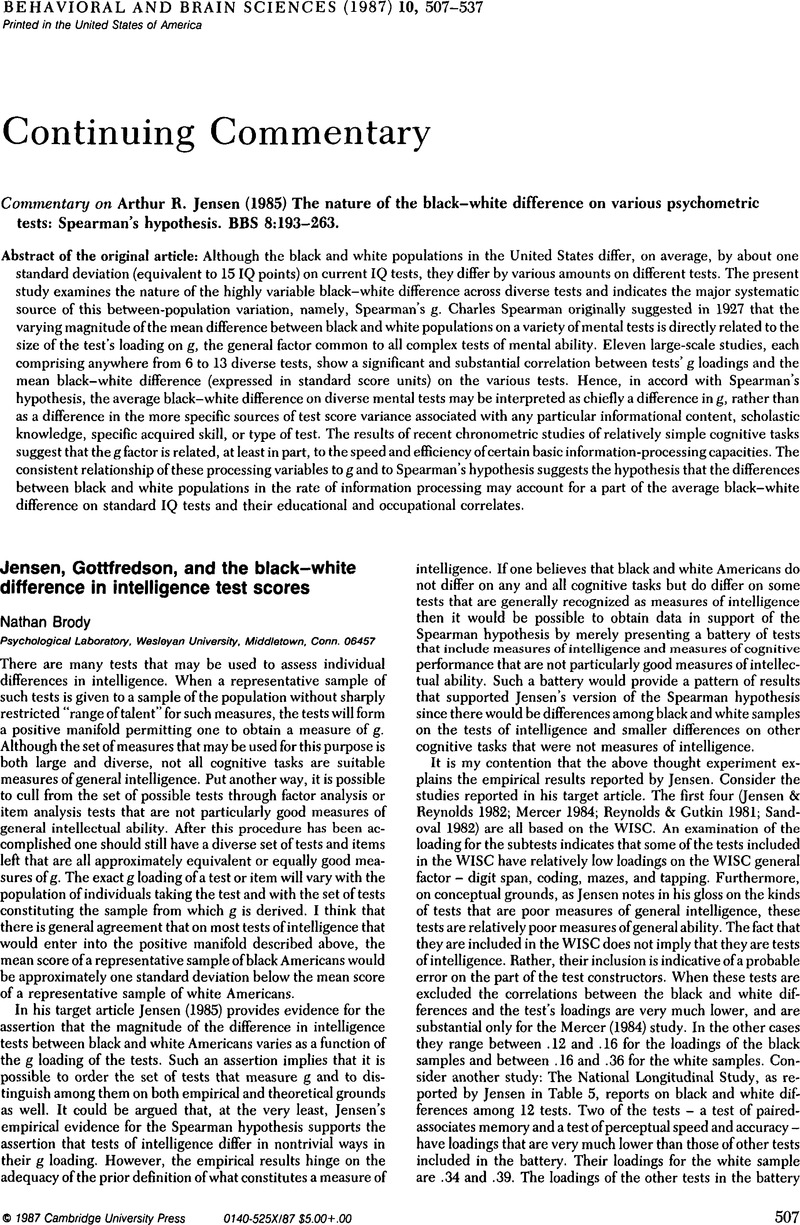Crossref Citations
This article has been cited by the following publications. This list is generated based on data provided by Crossref.
1992.
Intelligence.
p.
357.
Jensen, Arthur R.
1993.
Spearman's hypothesis tested with chronometric information-processing tasks.
Intelligence,
Vol. 17,
Issue. 1,
p.
47.
Gignac, Gilles E.
2015.
Raven's is not a pure measure of general intelligence: Implications for g factor theory and the brief measurement of g.
Intelligence,
Vol. 52,
Issue. ,
p.
71.



